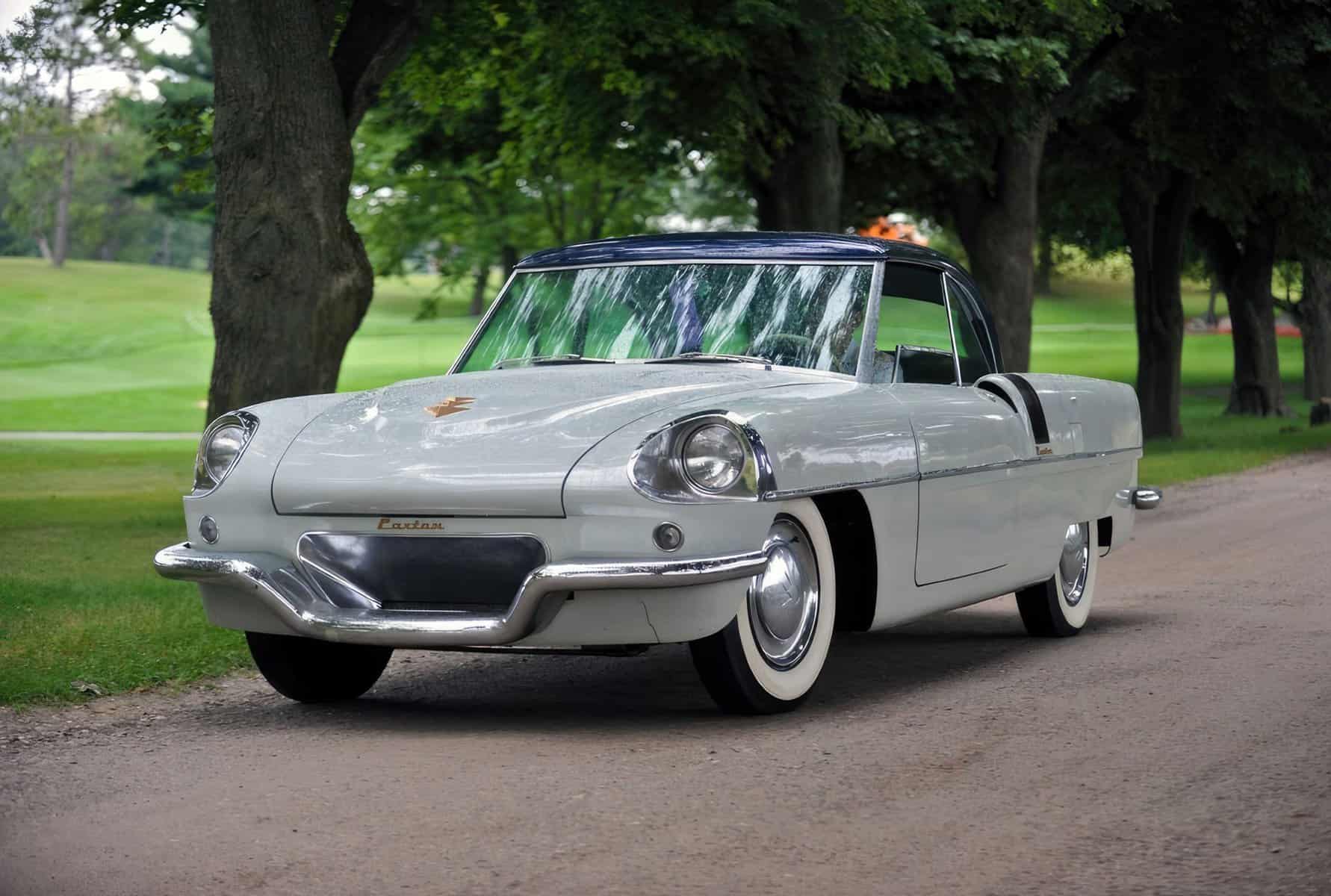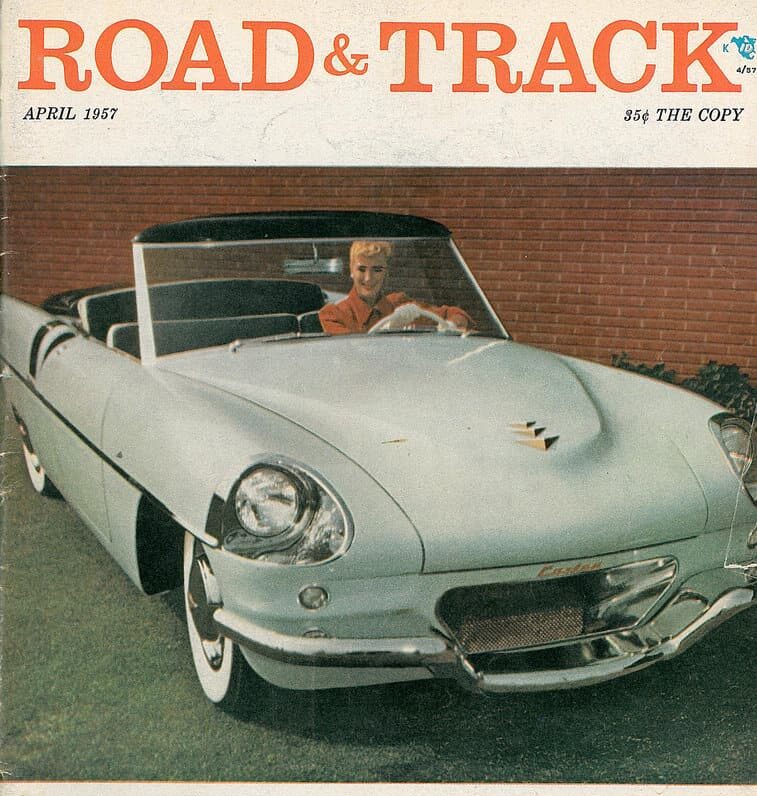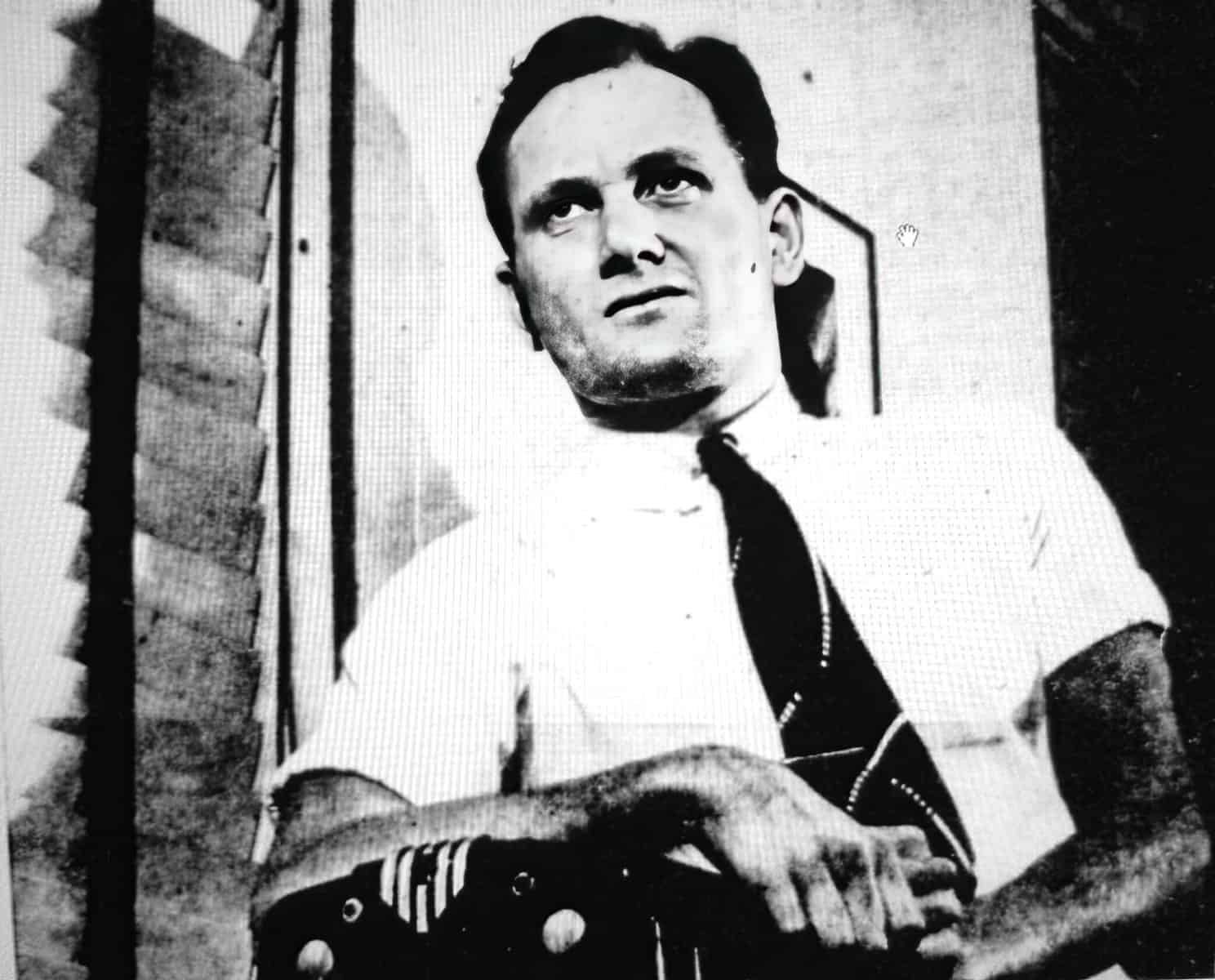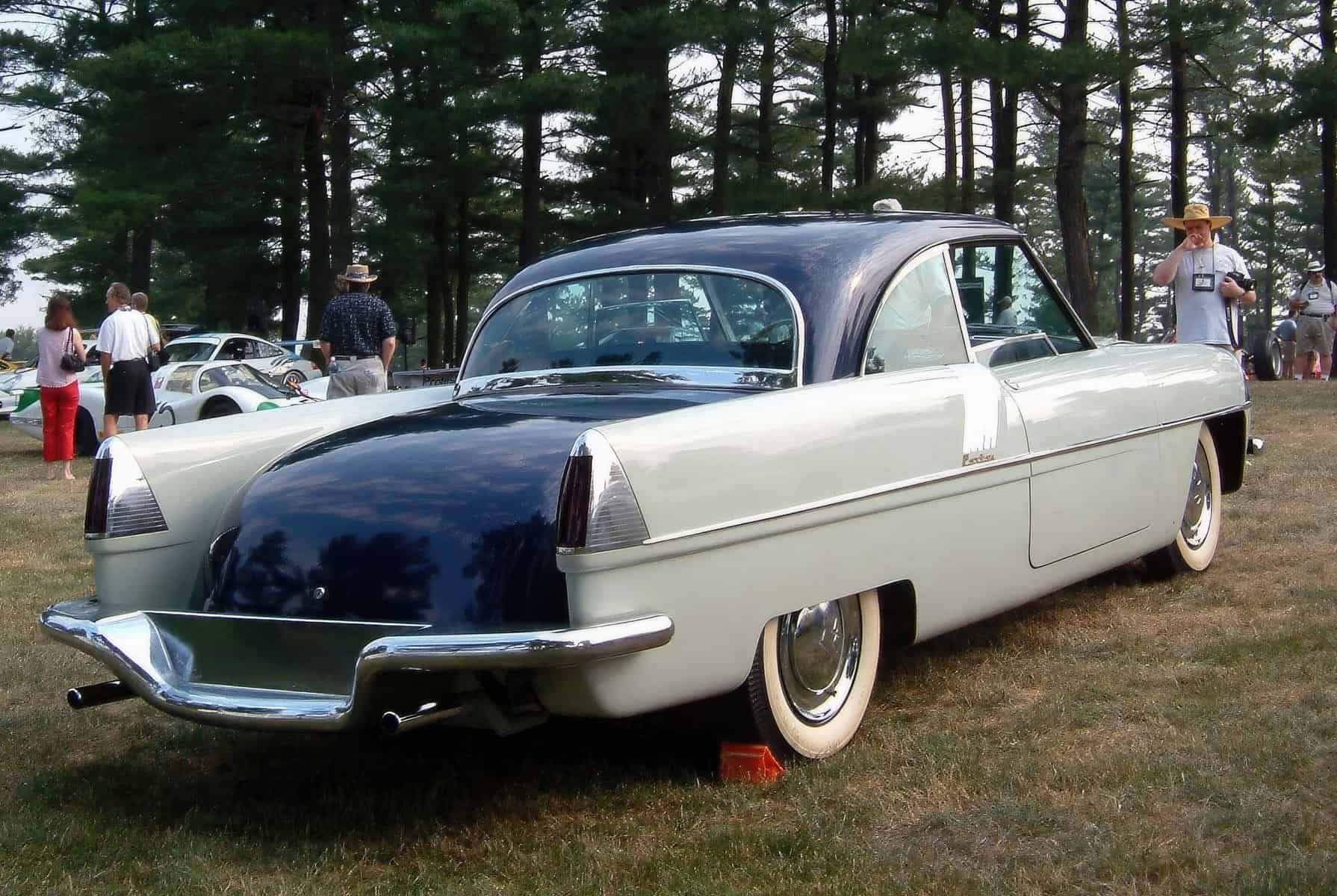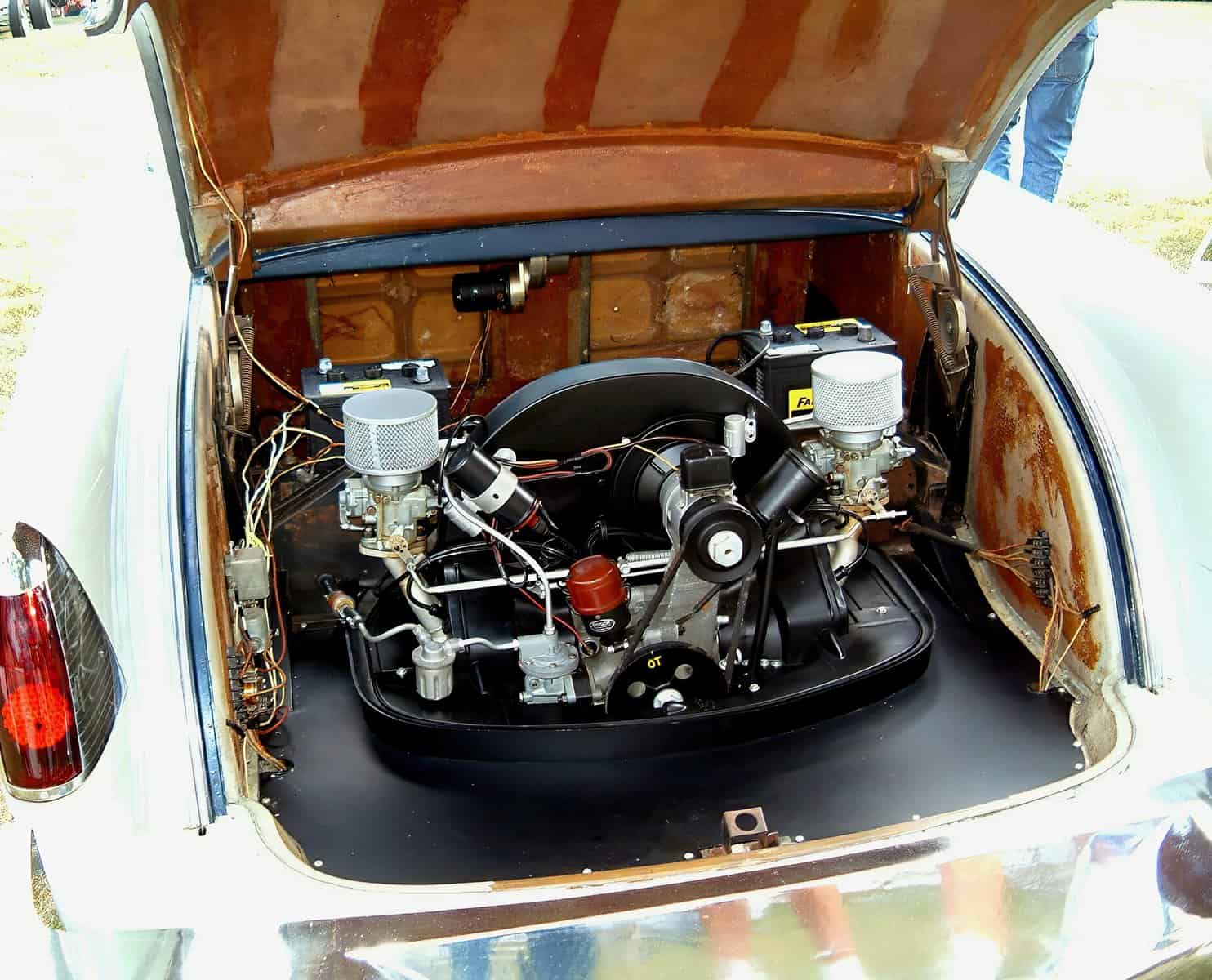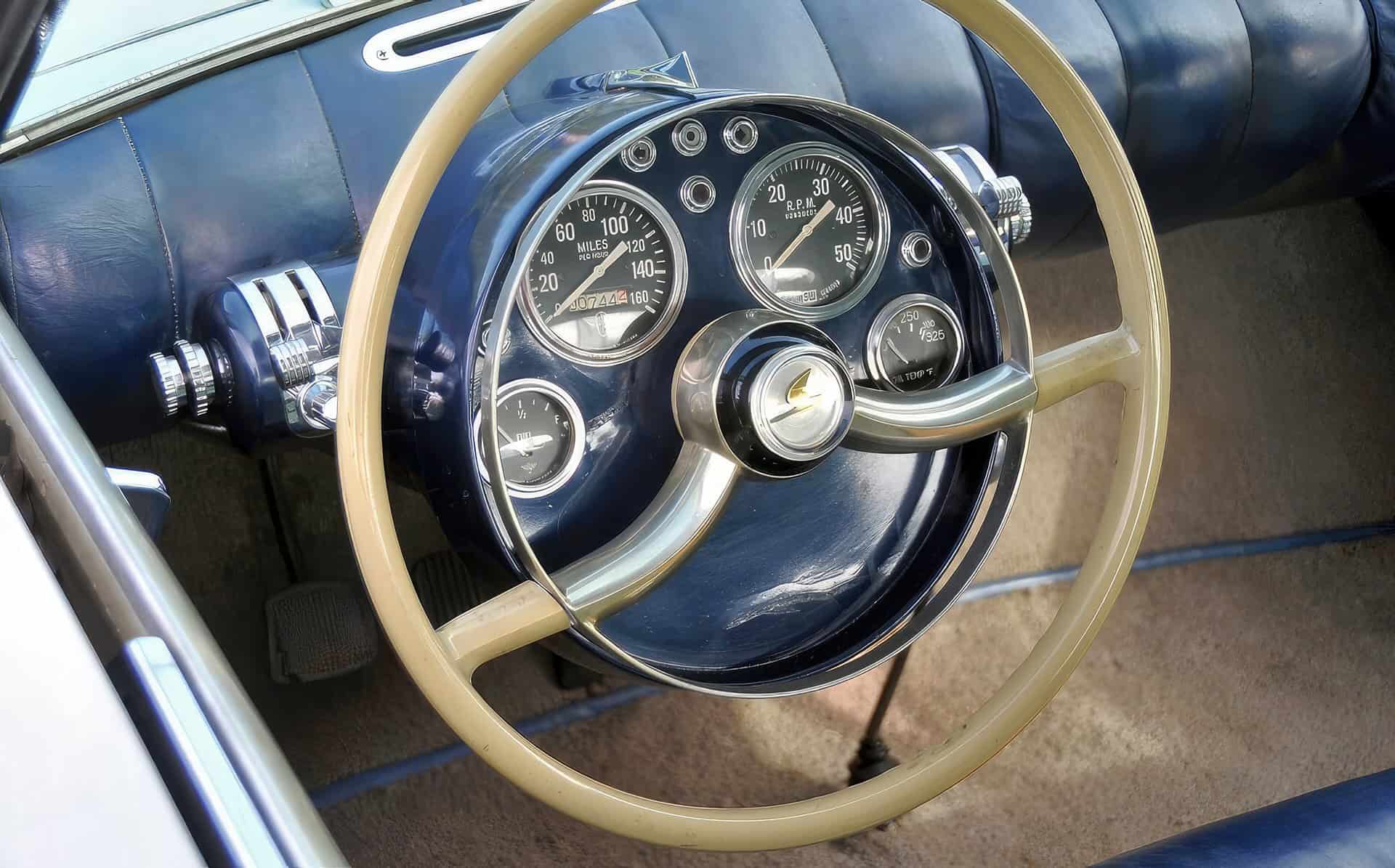Paxton Powered by Porsche
Porsche’s role in the creation of a unique Californian concept car
WORDS & IMAGES BY: KARL LUDVIGSEN
Porsche power and principles played a major role in the creation of a unique Californian concept car.
It came close to advancing not only external-combustion propulsion but also the idea of a more efficient small American automobile.
A Porsche car and Porsche concepts were part and parcel of one of the most ambitious independent American automotive-development projects of the 1950s. It took flight in the heady atmosphere of Southern California, where all things were possible. Its aim was creation of a car that would reject the pre-war banalities of the major manufacturers and set new standards by breaking free of convention.
Behind the Paxton Phoenix was one of the more creative spirits of America’s engineering community. In 1925 Robert Paxton McCulloch was 14 years old when he shared in the fortune founded by his grandfather, a pioneer in exploiting Thomas Edison’s electrical inventions. A genetic inheritor of his grand-dad’s technical passion and entrepreneurship, McCulloch graduated from Stanford with a degree in engineering.
While still an undergraduate Milwaukee-based Robert McCulloch was making his mark in the world of speed. He raced in outboard-motor hydroplane contests in more than 15 states and Canada, winning two class championships and collecting some 50 trophies.
McCulloch’s first business target was auto racing. He and his team built a four-cylinder two-stroke engine of one liter from which 90 bhp were extracted. Targeting the compact unit at midget racing, McCulloch installed it in a four-wheel-drive chassis. In the hands of local racer Cy Drew the combination was so effective that four-wheel drive for midgets was banned.
Taking note of the wave of supercharger launches by Duesenberg, Graham and Auburn, in 1935 Robert McCulloch turned his talents to a compressor suitable for the ubiquitous Ford V-8. The resulting McCulloch Supercharger was launched in 1937 as an $85 kit. More than 5,000 superchargers were sold before McCulloch ceased producing them after 1941 in order to turn his attention to wartime requirements.
McCulloch had a good war, designing and producing Roots superchargers that were used for railcar engines, generator sets and power units for high-speed patrol and torpedo boats. Shifting operations to California, McCulloch was not idle. His post-war activities included experimental helicopters and the compact two-stroke engines that had always been a passion.
Starting with their first McCulloch-branded chainsaw in 1948, his team engineered breakthroughs in small and light saws that became major money-spinners. Exploiting his middle name, McCulloch poured some of his profits into a new enterprise, Paxton Engineering, set up on May 1, 1950 to explore new business opportunities. He decanted more than $700,000 into development of the Paxton variable-speed centrifugal supercharger that achieved wide acceptance both in the aftermarket and as original equipment for Kaiser, Ford and Studebaker.
While launching his superchargers Robert McCulloch took on a vastly bigger challenge. ‘At war’s end,’ wrote Peter Linsky, ‘he was convinced there was a market for a modern, affordable luxury car that would combine strength, light weight, efficient packaging for four or five adults, and good performance and handling. These were features that he found lacking in nearly everything offered by domestic auto makers, which were then producing cars largely based on pre-war designs and technology.’ The ambitious price point of $10,000 was mooted.
An engine man at heart, McCulloch launched two projects to create possible power units for his dream car. He recruited steam-engine pioneer and expert Abner Doble to create a state-of-the-art Rankine-cycle engine, a version of which successfully powered a Ford coupe. While its triple-cylinder steam expander would be in the rear, the boiler would be in the nose with the condenser for which a large air inlet was essential.
Competing with steam power for the McCulloch machine was a two-stroke engine by brilliant engineers John Wesley Oehrli and Vladimir Jandasek. This had twin crankshafts driven by six opposing pistons in three cylinders on the model of German Junkers aircraft engines. Tested in a Studebaker, ‘it produced good power and fuel economy,’ said McCulloch aide Gerry Williamson. A four-cylinder version was planned as well. Oehrli, who was behind the supercharger’s mechanism, designed its infinitely variable multiple-belt transmission, using principles for which he had filed a patent in January of 1950.
Meanwhile a car was being created to house the winning power train. With the main driving elements being in the rear for both alternatives, this meant looking for a existing counterpart for study. All concerned agreed that this meant a Porsche. Accordingly early in 1952 a black 1500 Super coupe was bought from Hoffman Motors in New York and driven west for assessment and examination.
‘Although not a sports car,’ said project engineer and editor John R. Bond, the new McCulloch vehicle ‘was to give very high performance, seat four people and incorporate a hard top which would retract. Unwilling to rob his other divisions of engineering talent, McCulloch’s progress on the car was slow. The chassis design was entrusted to an experienced independent Detroit firm owned by Roscoe C. Hoffman.’
Rod Hoffman was eminently experienced in exotic drive trains and suspensions, with many prototypes, concepts and patents to prove it, Hoffman was a back-room source of technologies for Detroit’s motor makers. Making his own assessment of what Porsche had wrought, he adapted McCulloch’s Paxton Phoenix—as it became known—to the more typical American wheelbase of 118 inches.
As the car’s basis Hoffman specified a double-skinned frame of light-gauge rust-resistant steel. Described as being of ‘torque-box’ design, it had a longitudinal central core that contributed to its torsional stiffness of slightly better than 3,000 lb-ft per degree. The core also carried cooling air, wiring and controls from the opening at the front to the power unit in the rear. Brakes and 16-inch wheels were from the contemporary Ford.
Although Hoffman had many suspension ideas of his own, he did not stray far from Porsche 356 principles for the Paxton. Liberated from the swing axles that were part of the VW/Porsche drive line, Hoffman achieved a similar geometry with more robust semi-trailing tubular triangles guiding the rear wheels. Torsion bars were concentric with their pivots. Front suspension was Porsche-like with twin longer nine-inch trailing arms to allow greated wheel movement and transverse torsion bars, but with Hoffman twists. One was replacement of the single idler in the steering track rods with two idlers to give smoother tracking. John Bond described its other feature, automatic wheel banking, as follows:
‘The banking feature was extremely ingenious and remarkably simple. The upper trailing arms were rubber-bushed at the frame mounting bracket in such a way as to allow both normal suspension action and also pivoting when viewed from above. An inboard extension of each upper arm slips over and eccentric cam which is keyed to the respective dual (vertical) steering idler shafts. Therefore as the wheels are cramped they tend to ‘bank’.
‘With the Hoffman design,’ Bond continued, ‘the banking feature tends to restore the cornering car’s wheels to something near 90 degrees to the road, even though the chassis-frame and body are ‘rolling’. The banking feature allows extensive use of rubber without getting a horrible camber-angle change when the ride is ultra-soft and the roll angle is considerable.’
Covered by a Hoffman patent, this linkage did indeed address a long-standing shortcoming of the classic Porsche trailing-arm suspension, which was that cornering power was lost when the wheels banked as much as the car did in corners. In the Porsche proper the effect of this was moderate because its low center of gravity and relatively stiff springing meant that there was little roll. As well, some understeer effect at the front was welcome in view of the Porsche’s inherent oversteer tendency.
Gracing this chassis and its adaptations of Porsche technology was a highly styled body from the pen of Milwaukee designer Brooks ‘Kip’ Stevens. He hinted at inner strength with its richly rounded flanks and straight-through side trims from recessed headlamps to tail lamps completing the trailing forms of the rear fenders. The well-glazed coupe roof of the Paxton was mounted on rollers guided by tracks alongside the rear fenders that allowed cables to move it back and down to nestle above the rear deck. Although constraining the shapes of both elements, this was a style and technical coup.
Like the rest of the Paxton Phoenix bodywork its long-horn-shaped bumpers were of glass-reinforced resin or fiberglass in the vernacular. Offering bench seating, its interior concentrated Stewart-Warner gauges in a cowl behind the steering wheel. Flanking it were Cord-like levers whose original intent was control of the Doble-designed steam engine. Electricity powered seat adjustment, windows, door locks and deck-lid latches as well as the retractable roof.
A tribute to the engineering by Rod Hoffman and the fabrication skills of the McCulloch team was the Paxton’s light weight of 2,200 pounds, in spite of a wheelbase that was more Detroit standard than sports-car-like. As a result, said keeper at this writing Myron Vernis, its early Type 528 Porsche four-cylinder engine ‘moves it along quite nicely. We cruise at an easy 65 to 75 mph. The brakes are also up to the task. It feels quite softly sprung and the unusual front suspension layout gives good front-end grip. Handling is sharp, certainly comparable to a 356.’
Installation of the Porsche 1500 Super’s drive train (The engine’s serial number is 3375.) to power the Phoenix followed the mid-1954 decision to wind down the steam-car project after some $1.5 million had been spent on the car and its drive-train experiments in various mules. At the project’s close the engine-less Porsche Super coupe was auctioned to one of the company’s employees for $580.
‘We asked Robert McCulloch the reason for this decision,’ John Bond related, ‘and he summed it up neatly. In our words it boils down to a problem of engineering manpower. The car program was taking trained technicians away from the multitudinous McCulloch projects in other fields—fields which the company feels will be more profitable.’ McCulloch was also tiring of friction between his two teams of engine developers.
Rumors swirled around the ambitious McCulloch project, which was first made public in 1957 by John Bond in his magazine Road & Track. The emphasis in his article about it was on its mooted steam power, for this was a subject of endless fascination in America where steam propulsion lasted the longest and advanced the most. The car was still in the possession of Robert McCulloch at his death in 1977. By that time, between 1967 and 1974, Bill Lear had started and stopped his costly search for modern steam power.
From our 21st-century perspective the most intriguing aspect of the Paxton Phoenix is its Porsche heritage. While engineers in Detroit and Los Angeles were adapting Porsche ideas to McCulloch’s radical power trains, Porsche was designing a complete new car, its Type 542, for South Bend auto maker Studebaker. Neither project was fated to fructify. How fascinating—and potentially productive—it would have been for each of these groups to see what the other was doing.
